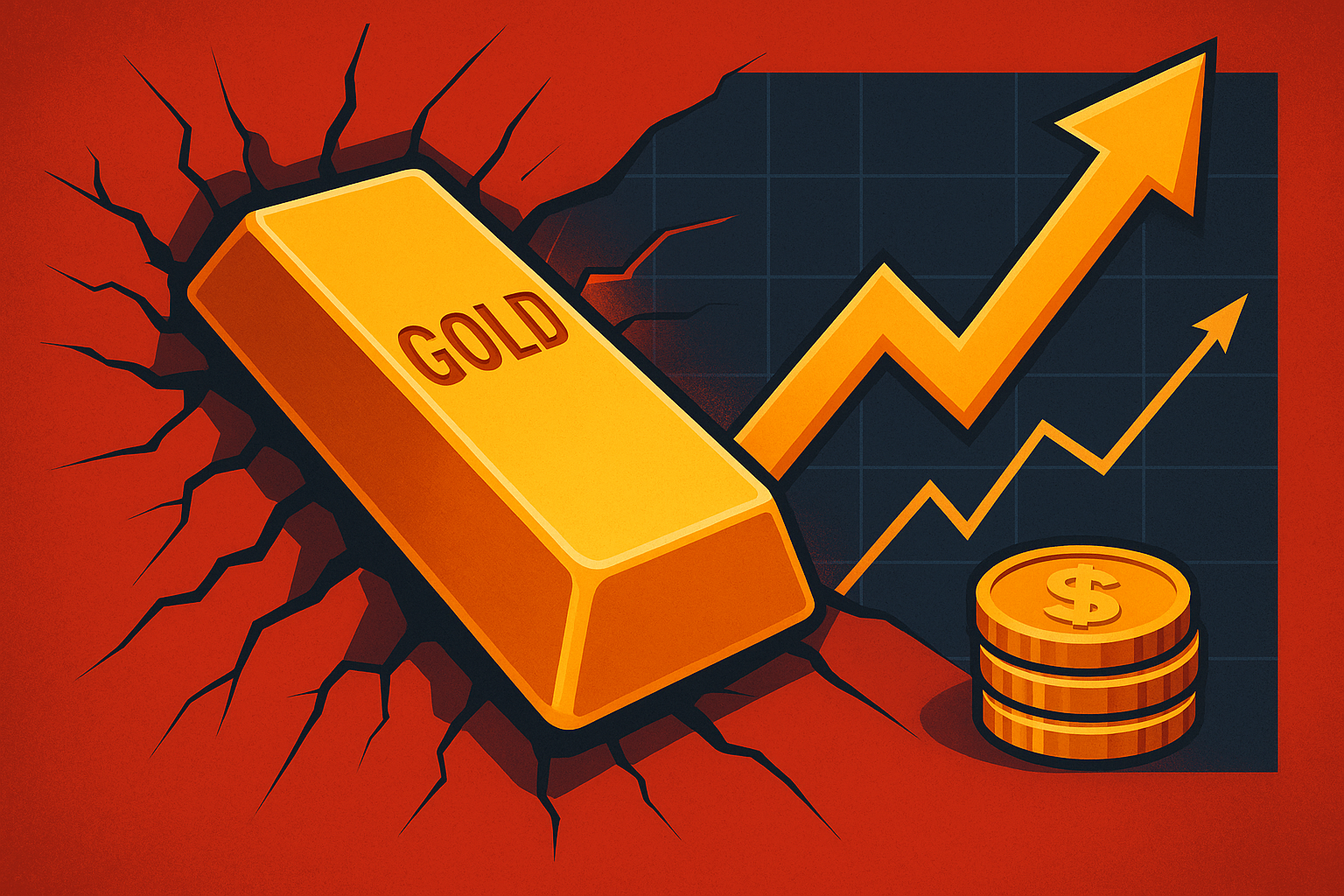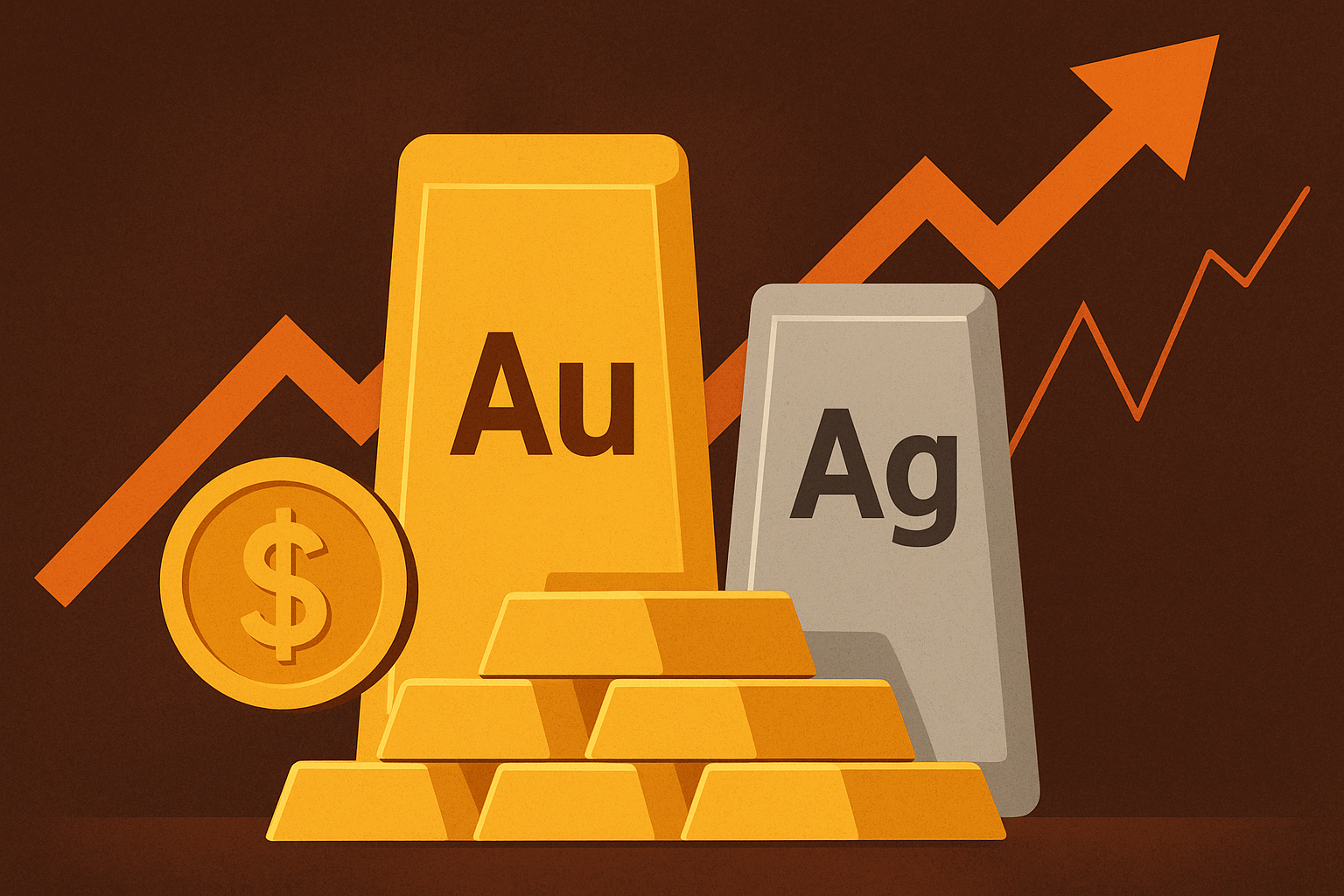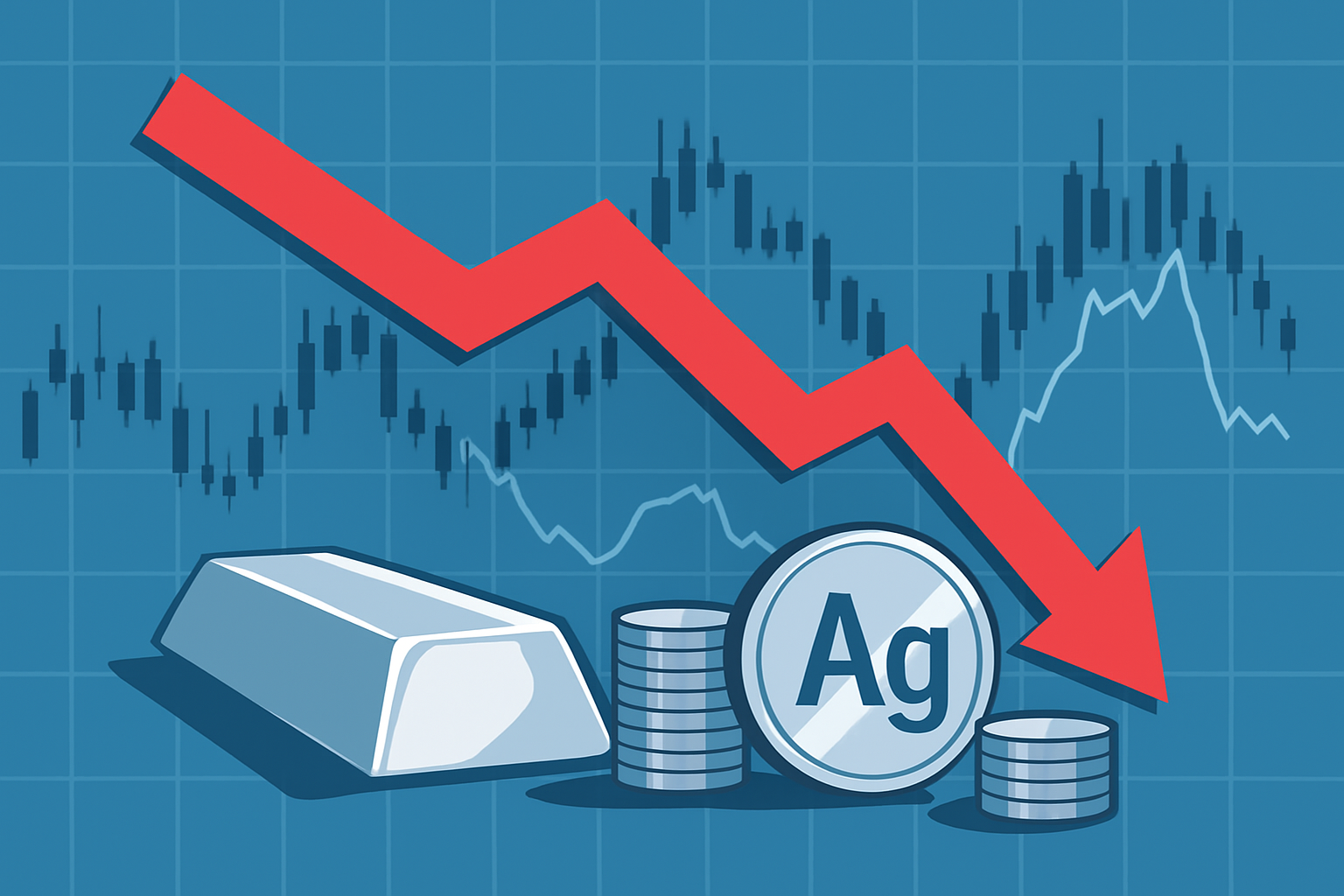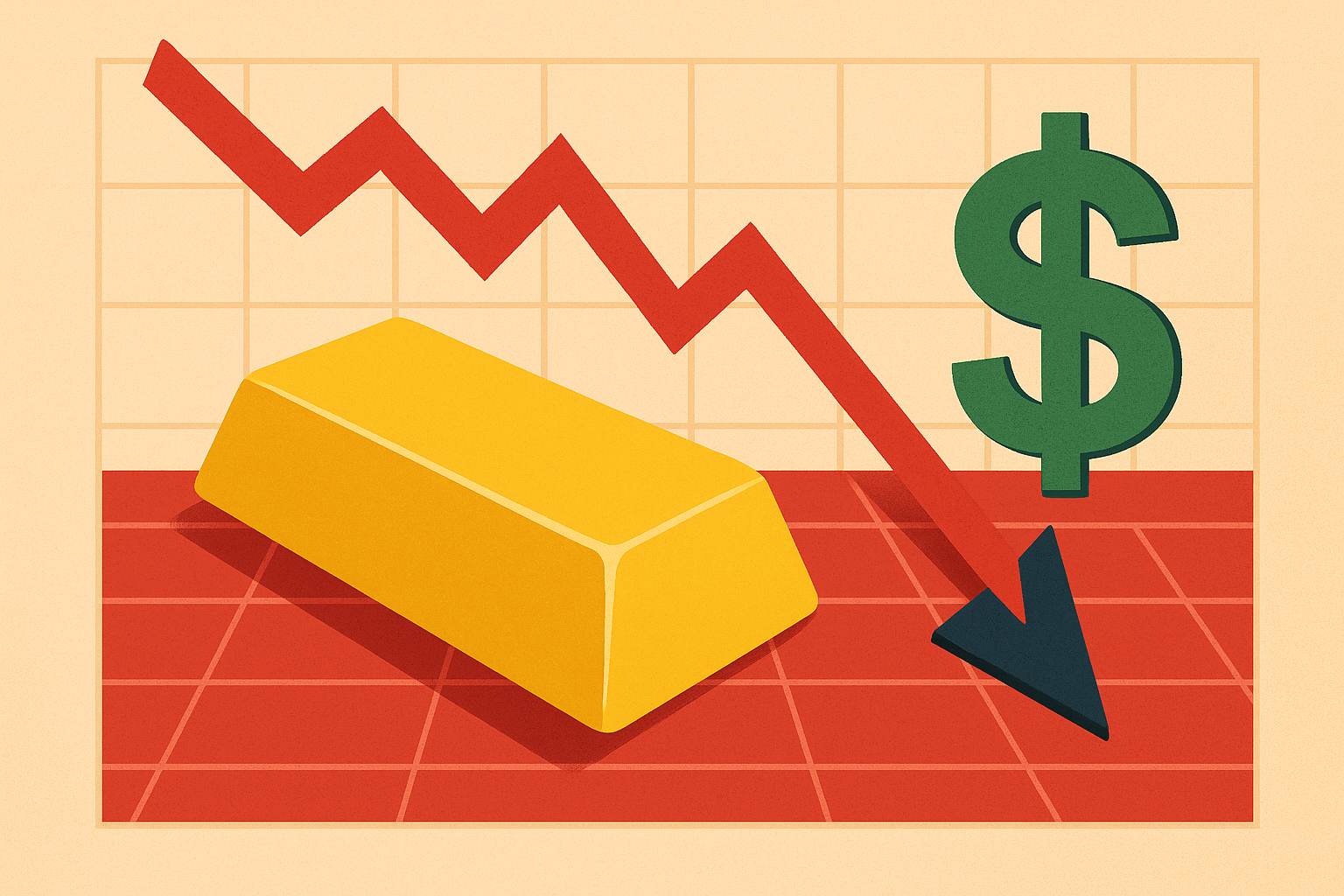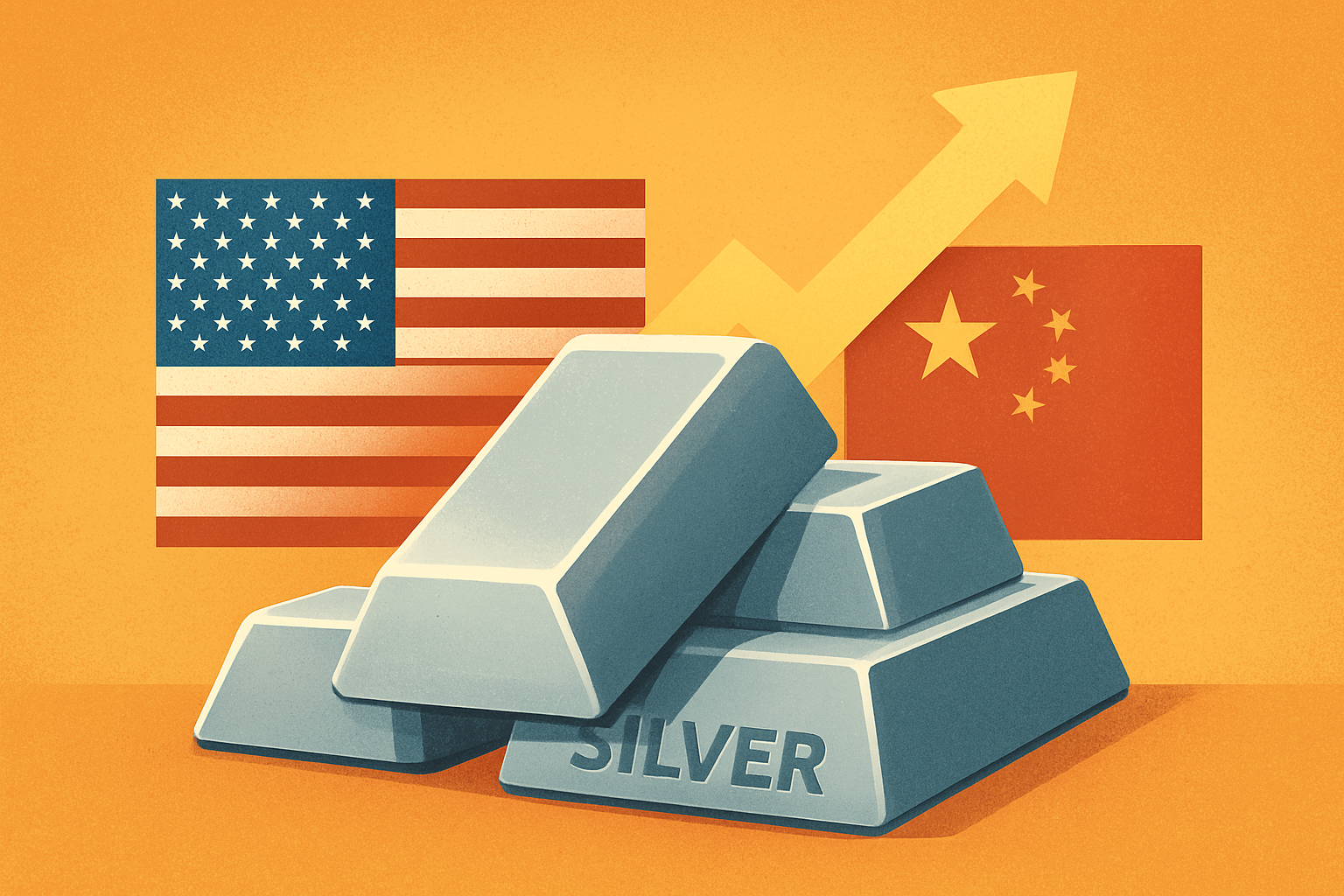When investors start talking about “the ultimate safe haven,” gold once again takes center stage — and this week, it delivered a record-breaking performance. Spot gold prices surged past $4,300 per ounce, marking their strongest weekly gain since the 2008 global financial crisis, as global markets buckled under renewed U.S. banking sector jitters and intensifying U.S.–China tensions. The move cements gold’s dominance in a volatile macro environment, where capital preservation has taken priority over speculative growth.
Global Turbulence Rekindles Gold’s Appeal
The rally was fueled by a perfect storm of macro catalysts. Investors piled into gold after a string of disappointing earnings from U.S. regional banks rekindled fears of systemic stress within the financial sector. At the same time, geopolitical rifts between Washington and Beijing have deepened, particularly over technology restrictions and the ongoing Taiwan issue — triggering fresh rounds of risk aversion across global markets.
According to Reuters, spot gold climbed more than 6% in just five sessions, extending its monthly gains beyond 12%. Analysts at HSBC have since lifted their 2025 forecast for the yellow metal, predicting that prices could hit $5,000/oz by 2026 if inflation remains sticky and the U.S. Federal Reserve proceeds with rate cuts next year.
Meanwhile, The Guardian reports that central banks — led by India, China, and Turkey — continue to expand gold reserves at an accelerated pace, with India’s Reserve Bank surpassing $100 billion in holdings for the first time. That’s a strong indicator that institutional confidence in gold remains deeply entrenched.
Why This Matters for Investors
Gold’s latest surge isn’t just another speculative rush — it’s a structural flight to safety amid global uncertainty. The metal’s correlation to real yields has weakened, signaling that investors are prioritizing capital protection over yield-seeking behavior.
ETF inflows have rebounded sharply, with global holdings up 4.2% month-over-month, according to data from World Gold Council (WGC). Physical demand is also strong, especially in Asia, where Indian jewelry purchases have climbed nearly 8% year-on-year, supported by the country’s festive season and robust economic outlook.
For equity investors, the rally has rippled across the mining sector. Shares of major producers like Newmont Corporation (NYSE: NEM) and Barrick Gold (TSX: ABX) have both posted double-digit gains in October, while smaller royalty and streaming firms such as Franco-Nevada (TSX: FNV) and Wheaton Precious Metals (NYSE: WPM) have benefited from widening profit margins and strong cash flows.
Overheated, or Just the Beginning?
While gold’s fundamentals appear strong, technical indicators suggest the rally may be overextended in the short term. The Relative Strength Index (RSI) for spot gold has surged to around 88, signaling overbought conditions that could trigger short-term corrections. However, the broader momentum remains intact as long as U.S. real yields trend lower and the dollar weakens.
According to Bloomberg Intelligence, a sustained break above $4,250/oz positions gold for a potential move toward $4,500 by year-end, provided central banks maintain their dovish stance. The ongoing decline in Treasury yields — combined with rising geopolitical risk — reinforces the view that this is more than a technical rally; it’s a macro shift in investor psychology.
Future Trends to Watch
- Interest Rate Trajectory: The U.S. Federal Reserve’s next rate decision will be critical. Any hint of policy easing or slower balance-sheet reduction could extend gold’s bull run.
- Central Bank Activity: Watch for further reserve diversification from emerging market central banks — especially in Asia and the Middle East.
- ETF & Retail Flows: Continued capital inflows into gold ETFs will act as a strong confirmation signal for institutional demand.
- Currency Movements: A weaker U.S. dollar historically amplifies gold’s performance, making FX trends an important leading indicator.
- Geopolitical Tensions: U.S.–China relations remain a key wildcard. Any escalation in trade restrictions, cyber disputes, or regional conflicts could further stoke safe-haven buying.
Key Investment Insight
For investors, gold remains the defensive asset of choice amid elevated macro risks. However, given its rapid ascent, disciplined portfolio rebalancing is crucial. Exposure via gold ETFs, royalty/streaming firms, or quality producers may offer the best risk-adjusted entry points. Long-term trends continue to favor accumulation on pullbacks, particularly if the metal consolidates around the $4,000–$4,100 range.
Investors seeking to diversify away from fiat volatility may also consider gold-backed digital assets or tokenized reserves, which are gaining traction among institutional allocators. The broader takeaway: in a world of uncertain yields and geopolitical friction, gold’s strategic importance is rising — not fading.
As markets brace for another wave of volatility, staying informed is the real edge. For daily investor insights, commodities analysis, and exploration-stage updates, follow ExplorationStocks.com — your trusted source for credible, data-backed financial intelligence.

